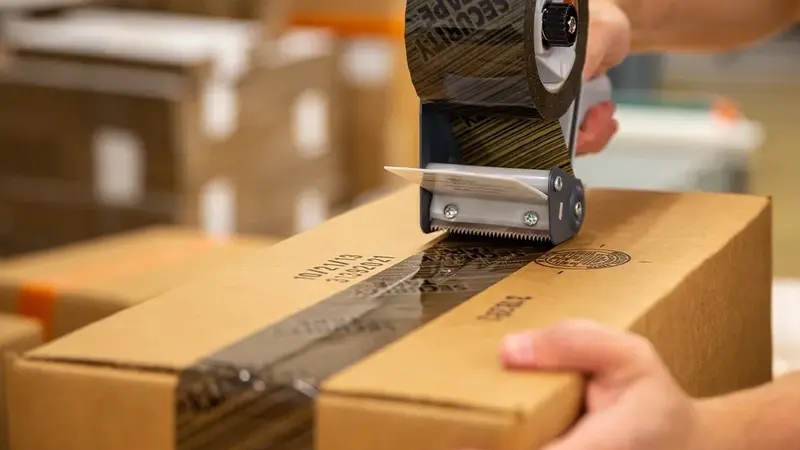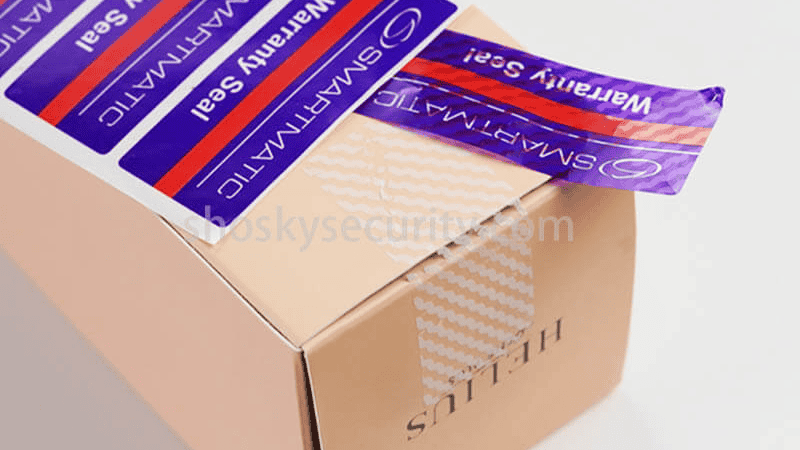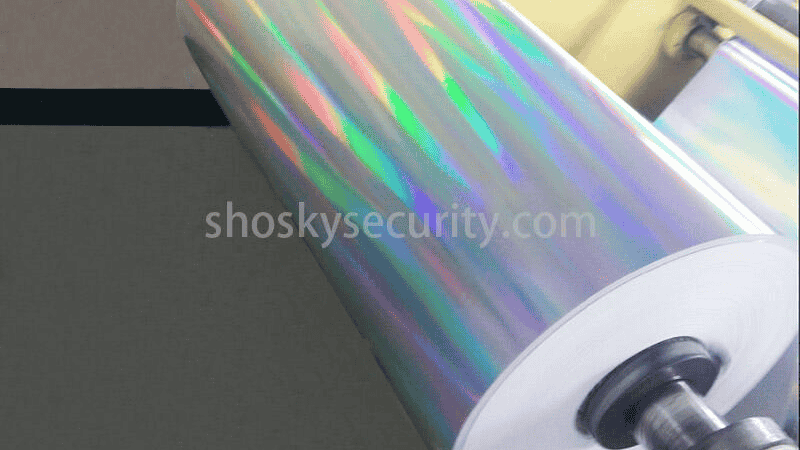The perk of advancing technology is that it hands over the ability to utilize our time more wisely and the channel to do so. For instance, you can save time by making auto-debit arrangements for your monthly insurance and food supplies or getting automatic payments for electricity and water bills.
Nowadays, people have unlimited access to products and services online. While we are shifting toward contactless delivery before 2020, the COVID-19 global pandemic has forced us to incorporate e-commerce and technology into our lives. However, with this technology inevitably comes the real threat of counterfeiting.

Although counterfeiting has constantly challenged brands, with the lead of e-commerce, customers are bombarded with being likely affected. Governments worldwide are trying to implement strict legislation and penalties while encouraging businesses to utilize anti-counterfeit packaging. Still, global markets experience being flooded with undetectable fakes. In fact, the World Customs Organization (WCO) annually reports confiscated counterfeit goods amounting to over $650 billion.
Apparently, counterfeiters can cause so much damage and serious security concerns for everyone involved. This is why manufacturers around the globe are incorporating many different types of anti-counterfeit packaging technologies for their consumers’ protection.
Common Anti-counterfeiting Technology
Anti-counterfeiting solutions like 2-D barcodes, holograms, radio frequency identification (RIF), forensic techniques, and even serialization, along with track and trace solutions, are protecting consumers from counterfeit merchandise.
Blending the Physical and Digital
The anti-counterfeiting sector has many innovative solutions to counter imitation products. The most prominent of the lot are holograms. They rank high on the list of conventional anti-counterfeiting solutions, and one reason is due to their technology that is independent of databases or anything else.
In addition, users find this security packaging solution for visual protection convenient to use and identify. Still, there are low-cost holograms that can be quickly imitated are flooding the marketplace. Hence, this physical anti-counterfeit packaging method is sometimes ineffective at present times. In fact, more often than not, it ends up persistingin the practice of counterfeiting.
Moreover, analog solutions such as luminescent topcoats are popular for their ease of use. They are not visible to the naked eye in broad daylight, but they reveal colors and patterns once seen under UVC (ultraviolet-c) lighting. This customizable and covert solution is challenging to copy by counterfeiters. This is why it is widely used in the electronics industry, luxury products, and pharmaceutical sectors across the entire value chain.
On the flip side of the anti-counterfeit packaging spectrum exist the digital unique QR (quick response) code, NFC (near field communication), RFID (radio frequency identification), smart labels, track and trace, blockchain, serialization technology, and other solutions.
To combat anti-counterfeiting issues, it is crucial to apply the ideal combination of physical and digital security packaging solutions, such as seals and labels. With the threat of fake product circulation, these physical and digital anti-counterfeiting packaging solutions offer tons of advantages that will surely benefit and protect brands.

Anti-counterfeiting Technology in Packaging
It is no secret that counterfeit products affect brands by reducing consumer safety, harming brand integrity, and increasing product liability concerns. This is why manufacturers and suppliers should apply anti-counterfeit measures in packaging. There are many anti-counterfeiting strategies available nowadays for authentication, even if the number and complexity of particular technologies continue to spike up, they will all fall into two basic classifications:
- Overt Protection – These are strategies and technologies that anyone, even consumers, can see and determine on a product. Examples are holograms, safety shrink-wraps, and stickers.
- Covert Protection – These are strategies that cannot be seen by the naked eye but can be apparent through the use of a special ID or testing equipment. The best examples are integrated polymer-based solutions, inks, and dyes.
Within these two groups, a handful of various application techniques are used to incorporate a security authentication solution into a product. Here is a list of the most popular delivery technologies available to implement an anti-counterfeiting solution in either product or packaging.
Inks and Dyes
Inks and dyes are typically used for authentic documents and currencies, What’s more, ink-based security features are becoming more popular in consumer packaging solutions. These covert anti-counterfeiting solutions are ideal for packaging applications where the field is heavily text or graphic-laden.
Once viewed under a black light or any illumination technology, the unique identification in the ink or dye is exposed. However, the main disadvantage is that once the packaging is removed or the surface is altered, there is no other way to authenticate the end-use item itself.
- Advantages
Since ink and dye are cost-efficient, they are commonly used plus easy to implement.
- Disadvantages
They can be easily removed or obscured.
Labels

Labels are typically used in conjunction with inks and dyes. Labeling solutions can be incorporated via the packaging decoration or a standalone label security tape applied to the finished product. The advantage of using a label-based program is that the technology is confined to limited space, and there is no change to the current manufacturing process.
Labels, however, can be easily removed. Also, they highlight features that potential counterfeiters can mimic.
- Advantages
Labels are easy to implement and have no change to the manufacturing process.
- Disadvantages
Labels can be an easy counterfeiting target because they can be easily removed.
Holograms
Holograms offer a highly visible or overt deterrent to counterfeiters. The advantage of this anti-counterfeiting strategy is twofold: it provides a barrier to imitation, plus it offers consumers peace of mind that they are receiving genuine items.
However, an average consumer may not be knowledgeable enough to spot a counterfeit hologram. Although there have been significant advancements in 3D holographic technologies recently, fake 2D holographic labels can be designed, made, and purchased over the internet for less than $0.01 per piece.
- Advantages
Holograms are visible deterrents that give consumers peace of mind.
- Disadvantages
They are more pricey compared to other anti-counterfeiting solutions. This is why other sellers rely on cheap security packaging solutions instead.

Integrated Polymer Based Solutions
Polymer-based anti-counterfeiting methods are ideal for applications where durability is a concern. Also, there is a need to verify the item’s authenticity after the initial sales, for instance, in a warranty claim or litigation following product usage. These overt and covert technologies embed unique identification into the product’s polymer. So, it is indelibly linked to the item and cannot be altered or removed without mechanically altering the product itself, which is an advantage in combating grey market goods and counterfeit ones.
- Advantages
The polymer-based anti-counterfeiting method is easy to implement.
- Disadvantages
This anti-counterfeit solution may need manufacturing adjustments.
Serialization
The utilization of 2D and 3D barcodes allows an excellent deal of information to be encoded in a small amount of space. This overt authentication method is predicted to be the fastest-growing track-and-trace solution method over the next couple of years. The proliferation of apps allows the brand owner or a consumer to scan and authenticate a code with a simple touch of a button.
- Advantages
This type encodes tons of information in a small space, easily authenticated by manufacturers and consumers.
- Disadvantages
Serialization’s coding method is easy to duplicate by counterfeiters.

RFID or Chip Based Solutions
Covert chip-based strategy will allow the progression of anti-counterfeiting solutions as we transition to innovative packaging. A container will not only be able to verify the location in real-time independently, but it will also be able to communicate with other containers that are close to report on any potential diversion activity. Software advances are making these services more attainable, but there is also a price premium and an expenditure to establish the initial infrastructure needed.
- Advantages
Great use in individual exclusive products for product verification. Also, its smart technology offers other tracking perks.
- Disadvantages
RFIDs are expensive to implement and will require particular manufacturing alterations.
Multilevel Technology Solutions
According to experts, a combination approach of covert and overt anti-counterfeiting solutions provides the most significant protection level. For example, a label may have a hologram, a 3D bar code, or a covert ink or polymer-based solution.
- Advantages
The combination approach of multilevel technology solutions for anti-counterfeiting is hard to copy since businesses use both covert and overt technologies.
- Disadvantages
However, this solution is expected to be costly and will also require a change in product manufacturing.

Why do you need anti-counterfeiting technology in packaging?
Anti-counterfeiting technology in packaging is essential and beneficial for all businesses, mainly in the food and beverage, health, pharmaceutical, and bank sectors. Most brand owners are not fully familiar with each type of anti-counterfeiting strategy that can be applied, but in general, here are the perks of employing covert and overt methods.
- Overt
- Consumers can verify it, so this type increases the consumer’s trust.
- Digital technology can be incorporated with QR Codes.
- You can add custom decorative appeal for security packaging.
- Covert
- It is simple and cost-effective to implement
- Modifications are possible.
- There are no regulatory approvals needed.
Anti-counterfeiting is essential for brands because, without it, their business will definitely be attacked by product counterfeiting, tampering, parallel trading, and even pilfering. Hence, brand protection is a must. This is why business owners and packagers learned to employ various types of covert and overt measures on their packaging to guarantee product security and consumer safety.
Conclusion
We hope that this comprehensive guide about anti-counterfeiting and security packaging solutions was a big help to you. As the counterfeiting panorama constantly changes, the solutions applied to oppose them need to adapt just as quickly.
Get Your Packaging Solution Today!
Shosky, through our advanced technology, provides the embedding of unique authentication markers to your packaging boxes. This offers an unprecedented security level and peace of mind in the face of today’s global packaging challenges. Contact us to get your anti-counterfeiting and security packaging solutions today!

